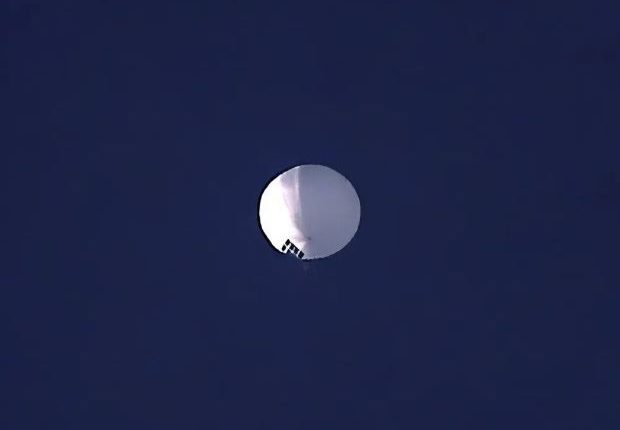Pentagon says it detected Chinese spy balloon hovering over Montana

By Helene Cooper
WASHINGTON — The United States has detected what it says is a Chinese surveillance balloon that has been hovering over the northwestern United States, the Pentagon said on Thursday (2), a discovery that comes days before Secretary of State Antony Blinken’s visit to Beijing.
President Joe Biden has chosen, for now, not to shoot down the balloon after a recommendation from Pentagon officials that doing so would risk debris hitting people on the ground, according to a senior defence official who was not authorized to speak publicly.
The decision to publicize the discovery appears to put China on notice before Blinken’s Beijing visit — the first by an American secretary of state in six years — during which he is expected to meet with President Xi Jinping. The sudden appearance of the balloon is bound to raise already escalating tensions between the two powers.
The official said that while it was not the first time China had sent spy balloons to the United States, this one has appeared to remain over the country for longer. Still, a senior administration official who spoke on condition of anonymity said the balloon did not pose a military or physical threat and added that it had limited value in collecting intelligence. Another defence official said the Pentagon did not think the balloon added much value over what China could glean through satellite imagery.
Pentagon officials said the balloon had travelled from China to the Aleutian Islands of Alaska, and through northwest Canada over the past few days before arriving somewhere over Montana, where it was hovering on Wednesday (Feb 1).
Canada’s Department of National Defence said in a brief statement late Thursday that the movements of a high-altitude surveillance balloon were being “actively tracked” by the North American Aerospace Defence Command, which is part of the US-Canada military partnership. It added that the country’s intelligence agencies were working with American partners to “take all necessary measures to safeguard Canada’s sensitive information from foreign intelligence threats.”
“Canadians are safe, and Canada is taking steps to ensure the security of its airspace, including the monitoring of a potential second incident,” the statement said, without elaborating.
The Department of National Defence did not explain where or when the balloon had been spotted, where it might be heading or whether it was the same balloon that appeared high above Montana. It also did not explain the reference to a “potential second incident.” Officials with the department did not immediately respond to emails or phone calls seeking clarification.
It was unclear what China was looking for in Montana, but the state is home to the 341st Missile Wing at Malmstrom Air Force Base, one of three US Air Force bases that operate and maintain intercontinental ballistic missiles.
Brig. Gen. Patrick S. Ryder, the Pentagon press secretary, told reporters that the balloon was traveling “well above commercial air traffic,” adding that “once the balloon was detected, the US government acted immediately to protect against the collection of sensitive information.” He did not specify what those measures were.
The Pentagon sent F-22 fighter jets to track the balloon Wednesday, leading to flights being temporarily grounded at the Billings airport, the senior defence official said, but decided against shooting down the balloon.
Secretary of Defence Lloyd Austin called a meeting of senior military and defence officials on Wednesday to discuss how to handle the situation, the officials said.
Senior Biden administration officials called their Chinese counterparts with urgency using multiple channels and conveyed the seriousness of the issue, the senior defence official said during a briefing at the Pentagon.
China has several satellites that orbit around 300 miles above Earth. Like US spy satellites, the Chinese satellites can take pictures and monitor weapons launches, officials said. Both countries have a history of spying on each other; US officials visiting China on diplomatic missions routinely expect that their conversations will be monitored.
The Pentagon assessed that the spy balloon “did not provide anything that ‘other’ Chinese collections did not already provide them,” Michael P. Mulroy, a former deputy assistant secretary of defence, CIA officer and Marine, said in a text message. “This was likely a reference to Chinese spy satellites.”
The revelation comes as tensions between Beijing and Washington have been on the rise. On Thursday, the Defence Department said the US military was expanding its presence in the Philippines, as part of what military analysts said was an effort to constrain China’s armed forces and bolster the United States’ ability to defend Taiwan.
-New York Times


Comments are closed, but trackbacks and pingbacks are open.